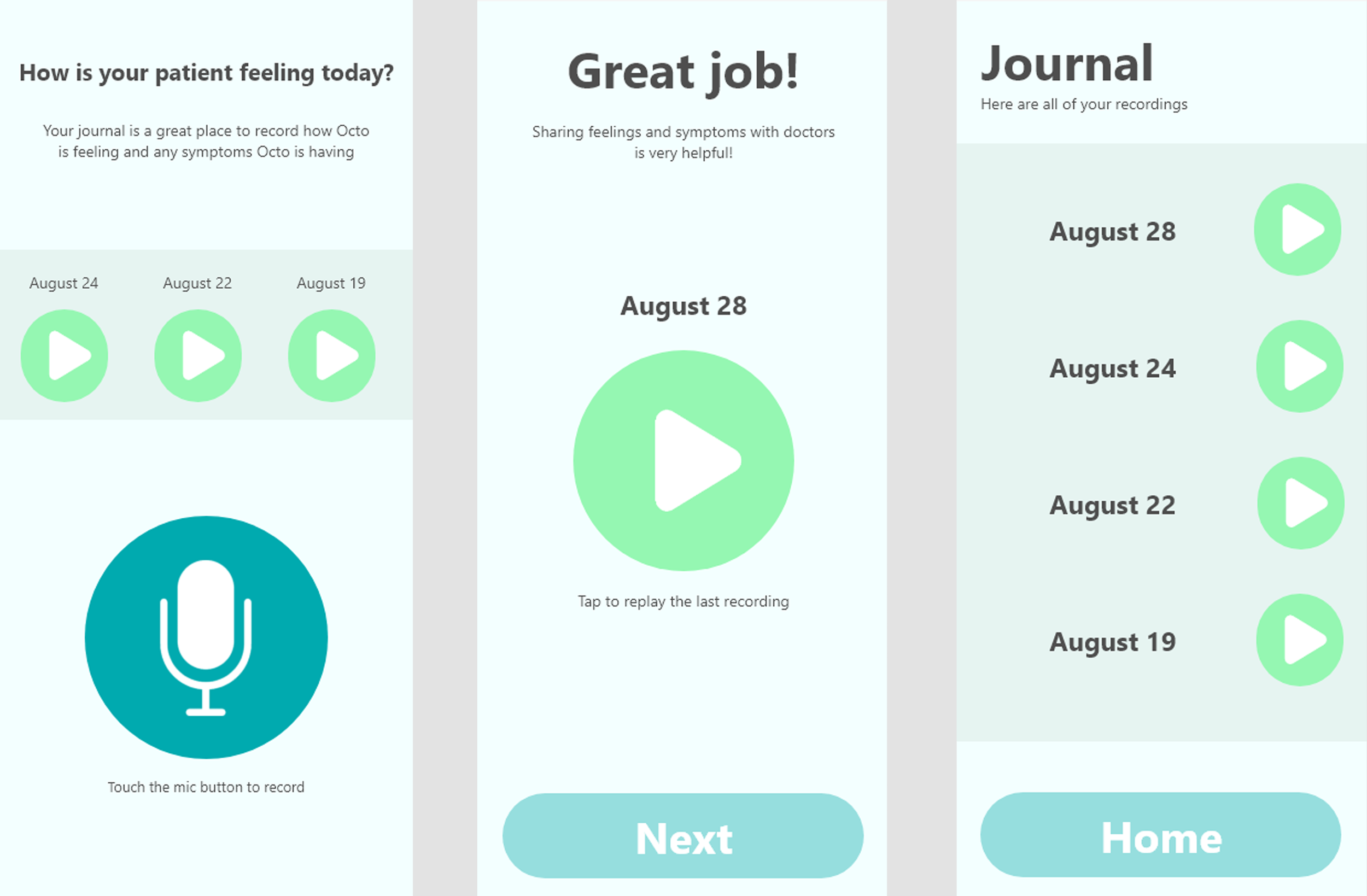Children diagnosed with Congenital Heart Disease (CHD) often require regular checkups from birth, but despite sometimes monthly visits, they know nothing about their CHD going into adulthood. Octo’s job is to teach children about their cardiac anatomy and ease their anxiety during doctors’ visits.
Research
The first step of this design project was to spend about a month learning as much as I could about Congenital Heart Disease
After that, I started market research. While there wasn’t anythign for CHD specifically, there is a similar product for Type 1 diabetes that I referenced because it was designed very well
As a part of my user research, I volunteered to be a camp counselor at Camp Odayin, a summer camp for kids with CHD. Some of the kids shared their struggles with me and it helped me understand what it was like for these kids to live with CHD.
In addition to my research through Camp Odayin, I was also able to speak to children and families that came in for checkups at the Masonic Children’s Hospital.
After talking with my client and creating some research goals, I created a list of questions for parents and patients with CHD.
After conducting research through the hospital and camp for about a month, I reconvened with my client. We determined that the main problems to solve were a lack of patient education and patient anxiety in a hospital setting.
Design / Prototyping
After talking with a child life specialist about patient anxiety, she recommended I include some type of medical role-play, i.e., allowing the child to act as a doctor “treating” a fake patient. On the right are some examples of how I did this.
As the user navigates through the checkup, they need to perform tests on Octo. For younger children, the value is in simulating the patient/doctor interaction, but as they grow older, they will start to understand what cardiac abnormalities look like via the information button on each test.
Lastly, per suggestions by my client and the child life specialist, I added a section of the app for children to share and document their feelings because it’s important for children to know they can share these feelings with their doctor






